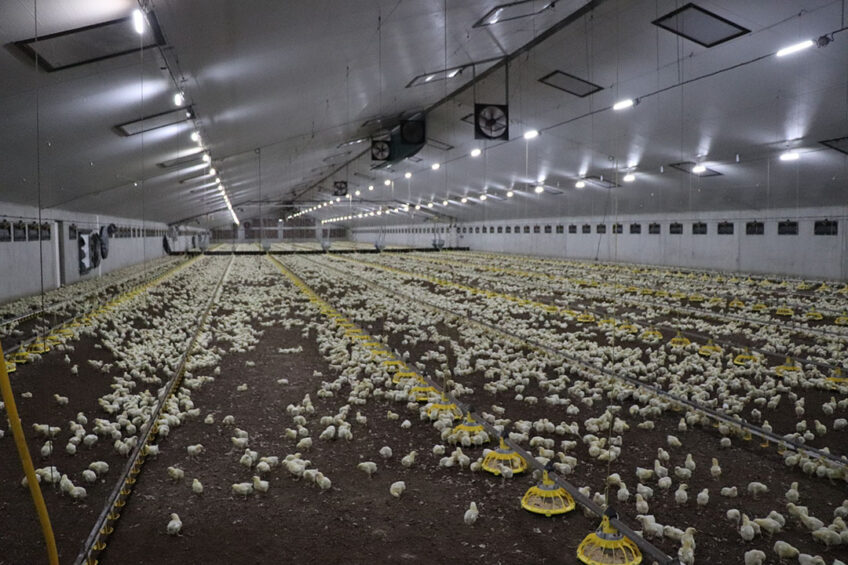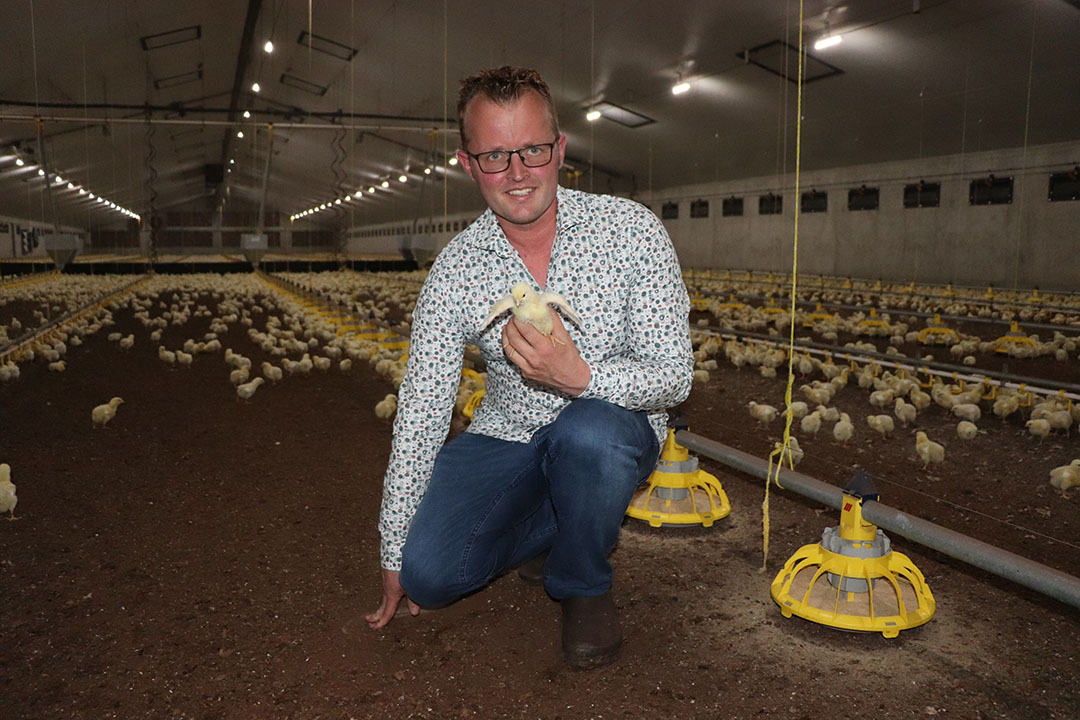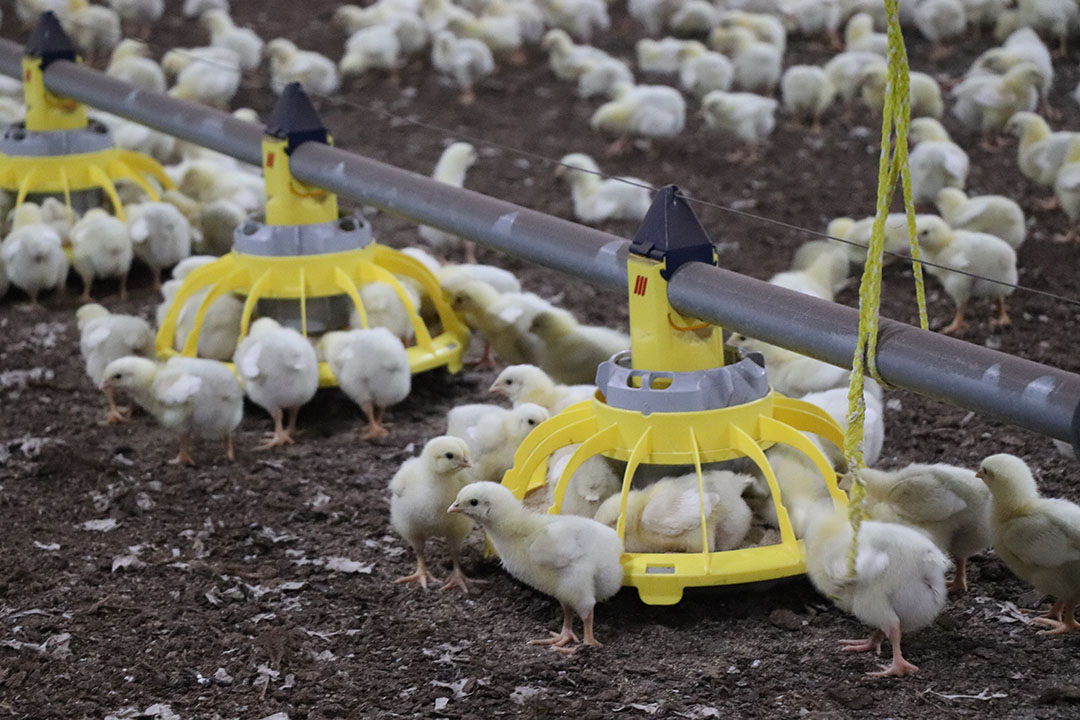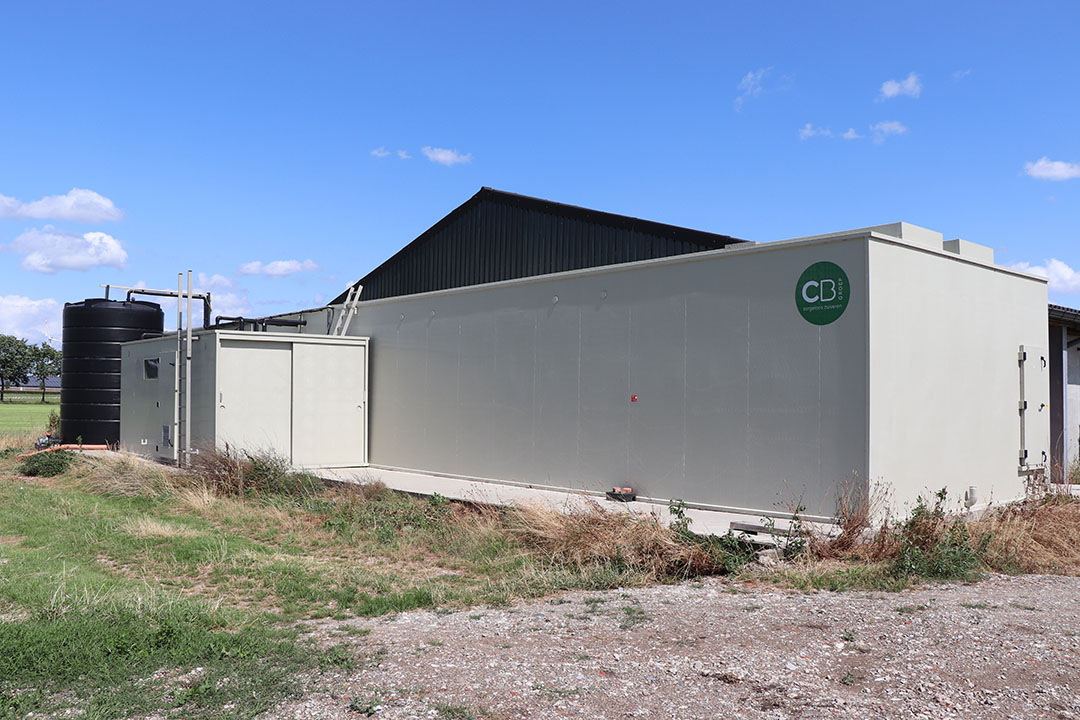‘Last ounce of broiler growth is not the most crucial thing’

The Belgian broiler farmer Gunther Leenaerts has a healthy discussion with his parents to achieve the best technical results. “We currently only have a 2-day age difference between a number of broiler houses so there is constant competition, at least in the mind.” The technical results are indeed important, but no antibiotic usage is even more crucial.
In the 1980s the parents of Gunther Leenaerts from Meer, Belgium, had 200 fattening pigs and 18,000 broiler places. In the years that followed, this grew to 1,000 fattening pigs and 75,000 broilers. Leenaerts: “In those years we mainly raised Ross 308 and occasionally Cobb chicks.”
In 2005, Gunther’s brother, Davy, took over his parents’ pig farming business. Gunther Leenaerts himself went to PTC+ training in Barneveld in the Netherlands in 2009. Leenaerts: “I followed a 10-week poultry farming course there. After that, I immediately started working at the Belgian hatchery, Belgabroed.” He worked at Belgabroed for 10 months and then started working at his parents’ company in 2009, with space for 75,000 Ross 308 broilers, at the time.
Expansion
In 2010, the company built 2 new houses adjacent to the existing 3 houses, for 84,000 broilers. The 2 new buildings were equipped with longitudinal ventilation. In 2020, the company bought an old laying hen farm in Meer to further accommodate expansion. Leenaerts: “We bought this site to convert it into a broiler farm but that turned out to be very difficult from a licensing point of view.”
Nevertheless, it eventually worked out and now there are 69,000 broilers there. The house is equipped with an air scrubber of a type that is normally used in pig houses, an air scrubber from CBGroep from Staden, Belgium. The family trusts this brand because brother Davy has a pig farm with the same installation. The newest house in Meer now has its 14th flock of broilers. The division of tasks between family members is well organised. Leenaerts’ parents take care of the broilers in the oldest 3 houses and Gunther does the rest.

The company now has a total of 235,000 broiler places. In addition, the 3 houses managed by Leenaerts’ parents, which previously housed 72,000 broilers, are now again licensed for 82,000 broilers. O the 6 houses, 4 have a new climate and ventilation system from Hotraco. All houses have Roxell feed and water lines. For the feed pans, the Belgian poultry farmer has 2 types, the HaiKoo and the MiniMax feed pan, both from Roxell. “I like the MiniMax feeder pan much better than the HaiKoo, which I find more difficult to clean.”
There are drinking cups in the older barns where his parents care for the broilers and drinking nipples in the barns where Leenaerts cares for the chicks. “The reason I work with nipple drinkers is because I think cups are too much work. When the chicks are still small with cups you have to work with float balls so the chicks can reach the cups easily. The reason we did not have nipple drinkers in the past is because nipples often used to have too little flow.” All the houses are divided into 2 compartments to prevent the broilers from drumming.
Competition
The Leenaerts family partnership also has a manure processing unit. The manure from their own pigs has been processed since 2020. However, a composting machine was installed in 2021, initially to process the pig manure, but currently manure from the broilers is also mixed in. Leenaerts: “This is because pig manure contains a lot of phosphate and poultry manure has a lot of nitrogen and potassium. We turn it into compost and we can sell this easily in France.”

The day-old chicks in the barn with 69,000 broilers in Meer were previously hatched in the stable itself using the NestBorn concept. At the moment, however, the family is simply receiving day-old chicks again. Sometimes they come from Belgabroed and sometimes from hatchery David in Tielt, Belgium. When the Ross 308 broilers weigh 2.6-2.9 kgs they are delivered to the slaughterhouse. The feed conversion rate of the broilers is 1.48-1.55. “I am satisfied with the performance of our Ross 308 and they have good leg quality as well.”
The Belgian broiler farmer prefers to produce without the use of antibiotics. “A sharper FCR and a few more grams of growth, for example, are less important to me than production without using antibiotics. That really is the goal.” Leenaerts has always had a healthy running debate with his parents on animal performance and technical results. “Especially recently, as we currently only have a 2-day age difference between a number of broiler houses, there is a form of competition between the houses I manage and the ones my parents run. The mortality rate at both sites was very low in the last flock, with only 1% at 6 weeks of age.”
Peat
The broilers go to the slaughterhouse on day 40-43, depending on whether they have already reached their target weight. The broilers are sent to various slaughterhouses in the Netherlands and Belgium via Dutch compound feed company De Heus Voeders that arranges sales for the family. Because the Leenaerts family also produce for the Belgian Colruyt concept, the broilers only receive vegetable feed. Leenaerts’ broilers are never rejected upon delivery to the slaughterhouse. Because he uses peat from Latvia as bedding, the footpad lesion score among his broilers is very low. Leenaerts: “And that really has an impact. I used to use straw as well, but they do a lot less with that as far as footpad lesions are concerned.”

The poultry farmer is fully in control when it comes to cleaning and disinfecting the houses. When receiving day-old chicks, too, it’s hands on for Leenaerts and his parents. “These are critical moments; you need to pay attention,” he explains. The catching for processing is done by a certified catch crew but Leenaerts will drive the forklift to place the containers on the trucks himself. I want to keep control as much as possible; it also reduces the cost price.”
Regarding his future plans, Leenaerts wants to improve his technical results, following his parents’ advice. He also wants to make the work easier, for example, by coating the slots in the house floor so that he can clean and disinfect more quickly. “I will also replace the HaiKoo feed pans with a type of feed pan that is easier to clean.”
Join 31,000+ subscribers
Subscribe to our newsletter to stay updated about all the need-to-know content in the poultry sector, three times a week. Beheer
Beheer











 WP Admin
WP Admin  Bewerk bericht
Bewerk bericht